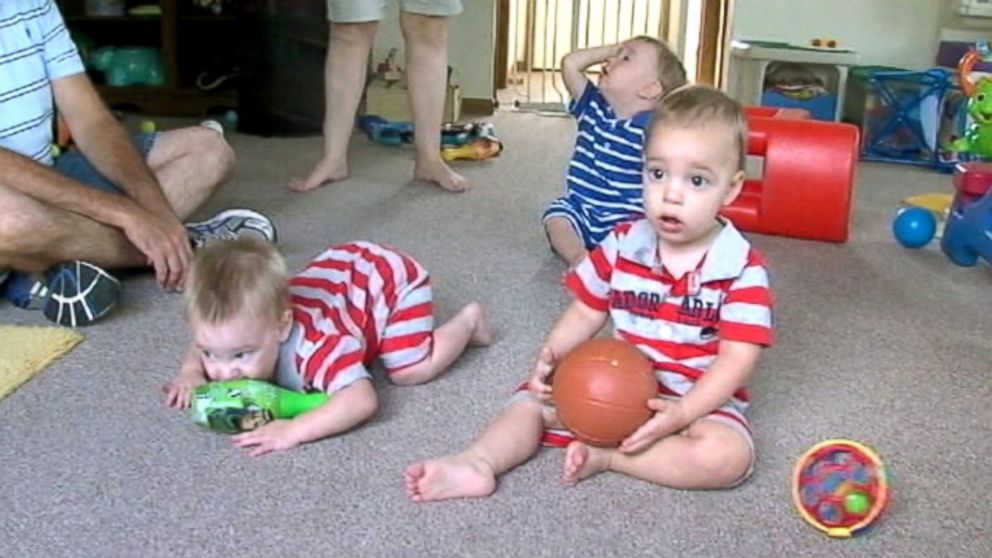
An Indiana couple is expecting their second set of triplets – an IVF surprise they’re still trying to wrap their heads around because they only had two embryos implanted.
Sarah Imbierowicz and her husband Bill have four boys: 3-year-old Will and 15-month-old triplets Tommy, Sammy and Drew. And in two months, the Kokomo, Ind., couple will welcome three girls.
“I would be lying through my teeth if I said I wasn’t a little overwhelmed,” said Imbierowicz, 36. “But I also know that with the help we have, there’s never going to be a baby not being held or a toddler not being played with. It will all work out.”
Couples Welcome Babies Born From Embryos Saved During Sandy
The couple slogged through three years of failed IVF cycles before getting pregnant with Will – the lone result of four embryos delicately dropped in Imbierowicz’s womb.
“We started out transferring two at a time but we miscarried several times,” she said. “Eventually we got to the point where we decided to transfer four.”
When Will turned one, the Imbierowiczs wanted to give him a playmate. This time, they transferred three embryos hoping for the same luck as before: a single healthy baby. Instead, they got three.
“We knew there was a chance, but since it didn’t happen before, we didn’t expect it,” said Sarah Imbierowicz, adding that only one of the three embryos was considered “good quality.” The second, she said, was “not great” and the third: “They said there wasn’t much point even trying to use it.”
But all three embryos developed into three healthy babies, born weighing between five pounds, eight ounces and six pounds, one ounce.
Because of the risk associated with multiples, the American Society for Reproductive Medicine recommends transferring no more than two embryos for women 35 and younger. But there are exceptions, according to Dr. James Goldfarb, a fertility specialist at UH Case Medical Center in Cleveland, Ohio.
“The goal in IVF is to transfer one embryo and get one pregnancy,” said Goldfarb. “But it sounds like this couple had gone through an awful lot of cycles.”
The Imbierowiczs were thrilled, but Bill worried his wife would eventually want a girl.
“He kept saying, ‘You need to think about this,’” said Sarah Imbierowicz, who felt that her biological clock was ticking fast at age 35. “And I said, ‘Well, if we’re going to do it, let’s do it now while we’re still in baby mode.”
Fertility Clinic Offers Gender Selection, Draws Women From Abroad
This time the couple implanted only two embryos, hoping for one healthy girl. Instead, they saw three little dark sacs on the ultrasound monitor, meaning one of the embryos split into two identical twins or the couple conceived one of the three naturally.
“Most of time when you transfer two embryos and get pregnancies it’s because one embryo split and you end up with identical twins,” sad Goldfarb. But it’s also possible that the Imbierowiczs conceived the third baby naturally.
“It’s not unheard of,” Goldfarb added, “but it’s much more likely that one embryo split.”
The three girls are due January 30, but will be delivered by C-section around New Year’s.
“We’re really excited to have everyone,” said Imbierowicz. “And it’s a bonus that they’re girls – it balances the house out for us.”
//FACEBOOK COMMENT